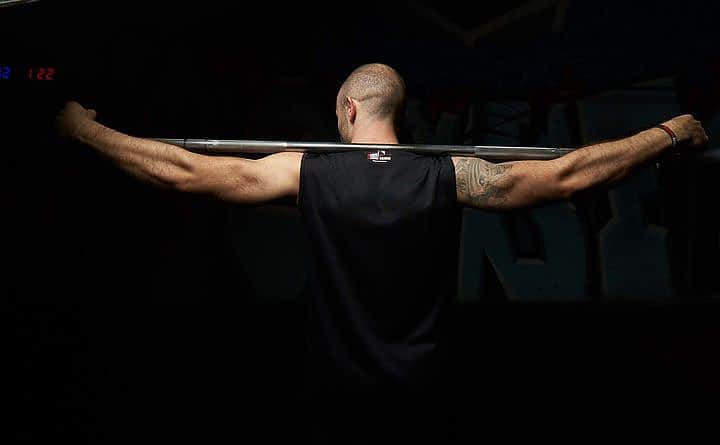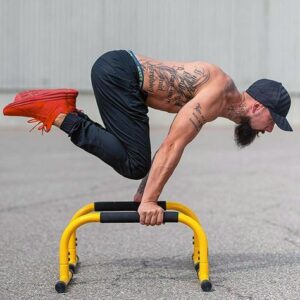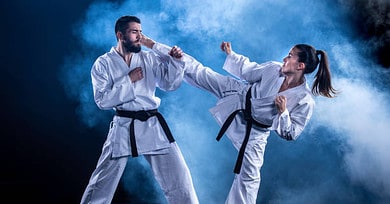Unlock Your Body’s Potential with Kinematic Chains: The Key to Mastering Martial Arts!
Introduction
Kinematic chains are an essential part of mastering martial arts. They are the key to unlocking your body’s potential and allowing you to reach your highest level of performance. Kinematic chains are a series of connected body parts that work together to create a powerful and efficient movement. By understanding how kinematic chains work, you can learn to use them to your advantage and become a more effective martial artist. In this article, we will explore the basics of kinematic chains and how they can help you become a better martial artist. We will also discuss the importance of proper form and technique when using kinematic chains in martial arts. By the end of this article, you will have a better understanding of how kinematic chains can help you reach your martial arts goals.
How Kinematic Chains Can Help You Unlock Your Body’s Potential in Martial Arts
Kinematic chains refer to the interconnected chain of joints and muscles in the human body that work together to produce movement. Understanding and utilizing the concept of kinematic chains is essential for mastering martial arts.
In martial arts, a fighter’s body must be able to move in a fluid and coordinated manner, with each movement flowing seamlessly into the next. This is only possible when the entire body is functioning as a single unit, with each joint and muscle contributing to the overall movement.
By using kinematic chains, martial artists can unlock their body’s full potential and achieve a level of mastery that would be otherwise impossible. By understanding how the various joints and muscles in the body are interconnected, martial artists can develop a deeper understanding of how to generate power, speed, and fluidity in their movements.
For example, a simple punch involves the use of multiple joints and muscles, including the wrist, elbow, shoulder, and core. By understanding how these joints and muscles work together in a coordinated manner, a martial artist can deliver a powerful punch with minimal wasted energy.
What types of kinematic chains are there in the human body
The human body contains various types of kinematic chains, which are groups of connected body segments that move together to perform specific movements. Some of the most common types of kinematic chains in the human body include:
- Open kinematic chain: An open kinematic chain is one where the end segment is free to move in space. Examples in the human body include the hand and foot.
- Closed kinematic chain: In a closed kinematic chain, the end segment is fixed in space. Examples in the human body include the leg during standing or squatting exercises.
- Serial kinematic chain: A serial kinematic chain consists of a series of connected body segments that move in a linear sequence. An example in the human body is the vertebral column.
- Parallel kinematic chain: In a parallel kinematic chain, several body segments move simultaneously and contribute to the overall movement. An example in the human body is the fingers when gripping an object.
- Hybrid kinematic chain: A hybrid kinematic chain is a combination of different types of kinematic chains. For example, the shoulder joint is a hybrid kinematic chain as it involves both open and closed chain movements.
It is important to note that the human body’s movements are often a combination of these types of kinematic chains, with different types of movements requiring different types of chains.
How to Use Kinematic Chains to Improve Your Balance and Coordination in Martial Arts
Kinematic chains are an essential component of movement in martial arts, and training with kinematic chains can help improve balance and coordination. Here are some ways to use kinematic chains to improve your balance and coordination in martial arts:
- Focus on the chain: First, focus on understanding the specific kinematic chain involved in the movement you want to improve. For example, a kick involves a chain of joints, including the hip, knee, and ankle. By focusing on the chain, you can better understand the mechanics of the movement and identify areas for improvement.
- Train for stability: Once you understand the kinematic chain involved, focus on training for stability within that chain. This can involve exercises that work on balance, such as one-legged squats, or exercises that target specific joints within the chain.
- Incorporate closed chain movements: Closed chain movements involve fixing the end segment of a chain in place, which can help improve stability and balance. For example, practicing squats with your feet fixed in place can help improve balance and coordination for kicks.
- Practice dynamic movements: Dynamic movements, such as jumping or changing direction, require coordination across multiple kinematic chains. By practicing dynamic movements, you can improve your overall balance and coordination.
- Train with resistance: Finally, incorporating resistance training can help improve the strength and stability of the muscles involved in the kinematic chain. This can involve using weights or resistance bands, or practicing movements that involve holding positions for an extended period of time.
The Role of Kinematic Chains in Developing Strength and Power in Martial Arts
Kinematic chains play an important role in developing strength and power in martial arts. Here are some ways kinematic chains can be used to improve strength and power:
- Maximize muscle recruitment: Kinematic chains allow for the coordinated activation of multiple muscle groups, which can help maximize muscle recruitment and improve overall strength and power. By training movements that involve multiple joints and muscle groups, you can improve your ability to generate gorce across the entire chain.
- Improve movement efficiency: Efficient movement patterns can help maximize strength and power by minimizing energy waste and reducing the risk of injury. Kinematic chains help to optimize movement efficiency by coordinating the actions of different joints and muscles within the chain.
- Train for explosive movements: Explosive movements require a high level of strength and power and can be trained using kinematic chains. Plyometric exercises, such as jumping and bounding, involve quick, explosive movements that rely on the stretch-shortening cycle of the muscles within the kinematic chain.
- Train with resistance: Resistance training can be used to improve strength and power in specific muscles within a kinematic chain. By using weights or resistance bands, you can increase the resistance on specific movements and challenge your muscles to adapt and grow stronger.
- Focus on closed chain movements: Closed chain movements involve fixing the end segment of a chain in place, which can help improve overall stability and power. For example, exercises that involve pushing against a wall or performing handstand push-ups can help improve upper body strength and power.
How to Incorporate Kinematic Chains into Your Martial Arts Training Program
Incorporating kinematic chains into your martial arts training program can help improve your movement efficiency, strength, and power. Here are some ways to incorporate kinematic chains into your training:
- Identify the kinematic chains involved: First, identify the specific kinematic chains involved in the movements you want to improve. For example, a punch involves a chain of joints, including the shoulder, elbow, and wrist.
- Practice closed chain movements: Closed chain movements involve fixing the end segment of a chain in place, which can help improve stability and power. Incorporate exercises that involve pushing against a wall, performing handstand push-ups, or practicing squats with your feet fixed in place.
- Train for explosive movements: Explosive movements require a high level of strength and power and can be trained using kinematic chains. Incorporate plyometric exercises, such as jumping and bounding, to improve your ability to generate force across the entire chain.
- Incorporate resistance training: Resistance training can be used to improve strength and power in specific muscles within a kinematic chain. Use weights or resistance bands to increase the resistance on specific movements and challenge your muscles to adapt and grow stronger.
- Practice dynamic movements: Dynamic movements, such as jumping or changing direction, require coordination across multiple kinematic chains. By practicing dynamic movements, you can improve your overall movement efficiency and coordination.
- Incorporate sport-specific movements: Incorporate movements that are specific to your martial arts discipline to improve your performance. For example, if you practice Muay Thai, focus on training the specific kinematic chains involved in throwing a roundhouse kick or elbow strike.





